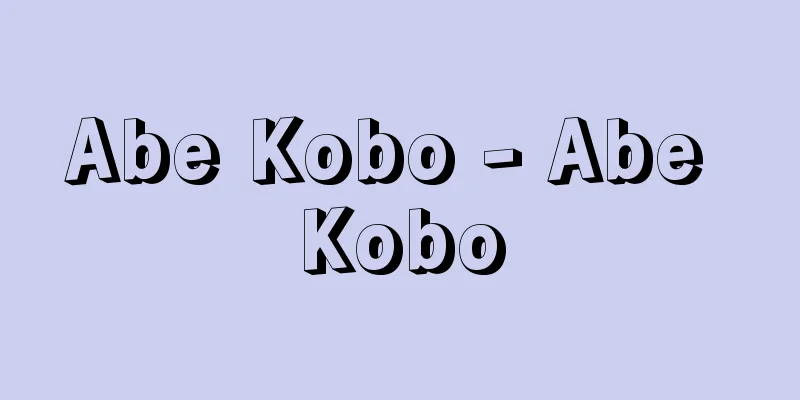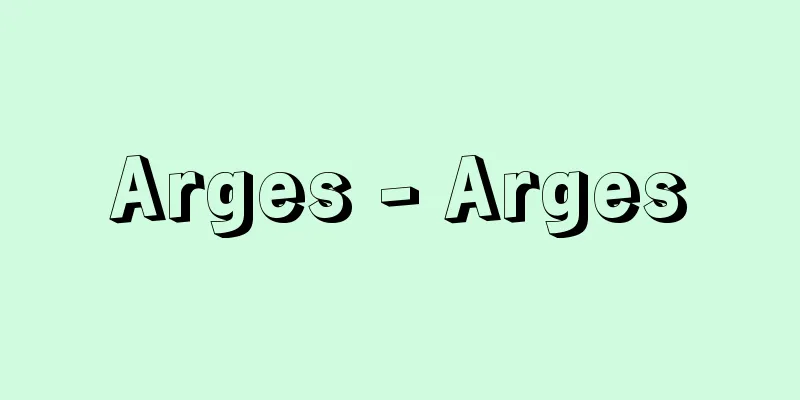Abe Kobo - Abe Kobo

|
Novelist and playwright. Born in Takinogawa, Tokyo on March 7, 1924. His real name was Kimifusa. He graduated from the Faculty of Medicine at the University of Tokyo in 1948. He spent his childhood in Mukden (Shenyang), Manchuria (northeastern China), where Japan experienced defeat in the war. The chaotic and abnormal experiences he had at that time are depicted in "Beasts Aim for Their Homeland" (1957). After the war, he joined the "Yoru-kai" group with Hanada Kiyoteru and others, became a member of the "Kindai Bungaku" group and began his full-fledged career as a writer, and made his debut as an existentialist writer with "At the Signpost of the Ending Road" (1948). Eventually, he approached communism ideologically and aimed to create avant-garde art incorporating surrealism. In 1951, he won the Postwar Literature Prize for "Red Cocoon" and the Akutagawa Prize for "The Wall: The Crime of Mr. S. Karma," establishing his position in the literary world as a uniquely talented postwar writer. He later became interested in documentary literature and science fiction, and experimented with anti-realism in works such as "Intruder" (1951), "Hunger Alliance" (1954), and "The Fourth Interglacial Period" (1959), as well as the plays "Uniform" (1954) and "The Ghost is Here" (1959). However, he made a great leap as a writer with "Woman in the Dunes" in 1962, and was highly praised both inside and outside the literary world. From the 1960s onwards, his style became more heavily based on dialectical thinking about human freedom and a motif of the logic of negation of community. His works such as "Another Person's Face" (1964), "The Burnt Map" (1967), "The Box Man" (1973), "Secret Meeting" (1977), and the plays "Friends" (1967) and "The Man Who Became a Stick" (1969) are set in the city and use a satirical and fantastical approach to sharply expose the pathology of modern society. After enthusiastically working on city-based settings such as "The Box Man," which depicts the dream of being anonymous in society, and "Secret Meeting," which unfolds a grotesque scene of medicine and sex in a huge hospital, in the 1980s he further strengthened his sense of crisis about modern civilization, and in "The Ark Sakura Maru" (1984), he depicted the tragicomedy of a man who built a nuclear shelter, with the theme of the danger of accidental nuclear war and survival. In Kangaroo Notes (1991), the protagonist, who is afflicted with a strange disease, travels in a floating bed with a life support system through the hell of terminal care and the underworld where even death has been industrialized. From his last work, The Flying Man (1994), recorded on a floppy disk, Abe continued to lead the cutting edge of the novel genre as an avant-garde writer, with a focus on the issues of national transcendence and individual freedom, and in the labyrinth of the city, he has varied the motif of "searching for a path to the unknown other." Since 1973, he has led the theater group "Abe Kobo Studio." Many of his works have been translated into foreign languages, making him one of the most international writers. He died of acute heart failure on January 22, 1993. His collections of critical essays include Thoughts in the Desert (1965) and Inner Frontier (1971), and his collection of dialogues include Circuit to the City (1980). [Ishizaki Hitoshi] "The Flying Man" (1994, Shinchosha) ▽ "The Complete Works of Abe Kobo, 29 volumes (1997-2000, Shinchosha)" ▽ "At the Signpost at the End of the Road" (Kodansha Bunko) ▽ "The Wall, The Woman in the Dunes, Another Person's Face, The Burnt-Out Map, The Box Man, Secret Meeting, The Sakura Maru Ark, The Kangaroo Notebook" (Shincho Bunko) ▽ "Enomoto Takeaki" (Chuko Bunko) ▽ "Abe Kobo Theory, by Watanabe Hiroshi (1976, Shinbisha)" ▽ "The World of Writers: Abe Kobo, edited by Sasaki Motokazu (1978, Bancho Shobo)" ▽ "Abe Kobo Theory, by Takano Toshimi (1979, Hanajinja)" ▽ "Japanese Literature Research Materials Publication Committee, ed., Japanese Literature Research Materials Series" "Kobō Abe and Kenzaburō Oe" (1980, Yuseido Publishing) " "Kiyoaki Hanada and Kobo Abe - Toward a Rebirth of Avant-Garde Literature" by Noboru Okaniwa (1980, Daisanbunmeisha) " "Kobō Abe's Theatre" by Nancy Shields, translated by Ama Osamu (1997, Shinchosha)" [References] | | |Source: Shogakukan Encyclopedia Nipponica About Encyclopedia Nipponica Information | Legend |
|
小説家、劇作家。大正13年3月7日東京・滝野川に生まれる。本名公房(きみふさ)。1948年(昭和23)東京大学医学部卒業。幼少年期を満州(中国東北地方)の奉天(瀋陽(しんよう/シェンヤン))で過ごし、そこで敗戦を迎えた。そのときの混乱した異常体験は、『けものたちは故郷をめざす』(1957)に描かれている。戦後、花田清輝(きよてる)らの「夜の会」に参加、『近代文学』同人となり本格的な作家活動を始め、『終りし道の標(しる)べに』(1948)によって実存主義的な作家としてデビューする。やがて思想的にはコミュニズムに接近、シュルレアリスムを取り入れたアバンギャルド芸術を志向し、1951年『赤い繭(まゆ)』で戦後文学賞、『壁―S・カルマ氏の犯罪』で芥川(あくたがわ)賞を受賞して、特異な才能をもつ戦後作家として文壇的地位を確立する。その後、記録文学やSFへの関心が加わり、『闖入者(ちんにゅうしゃ)』(1951)、『飢餓(きが)同盟』(1954)、『第四間氷期』(1959)、戯曲『制服』(1954)、『幽霊はここにいる』(1959)など反リアリズム的な実験を試みるが、1962年『砂の女』で飛躍的な作家的成長を遂げ、文壇内外の高い評価を受けた。1960年代以降は、人間の自由をめぐる弁証法的な思考を軸に、共同体への否定の論理をモチーフにした作風が濃厚となる。『他人の顔』(1964)、『燃えつきた地図』(1967)、『箱男』(1973)、『密会』(1977)、戯曲『友達』(1967)、『棒になった男』(1969)などは、都市を舞台に風刺と幻想に満ちた手法で現代社会の病理を鋭くえぐっている。社会的に匿名存在であることの夢を描いた『箱男』、巨大な病院を舞台に医学と性のグロテスクな光景が繰り広げられる『密会』など、都市を舞台に意欲的に取り組んだのち、1980年代に入ると現代文明に対する危機意識をいっそう強め、『方舟(はこぶね)さくら丸』(1984)では、偶発核戦争の危機と生き残りをテーマに、核シェルターをつくりあげた人物の悲喜劇を描く。また『カンガルー・ノート』(1991)は、奇病に取りつかれた主人公が生命維持装置付きの浮遊するベッドとともに終末医療の地獄や死すら産業化されている冥界(めいかい)を遍歴する。フロッピーに残された遺作『飛ぶ男』(1994)に至るまで、国家の超越や個の自由という課題を見据えつつ、都市という迷路のなかで、「未知な他者というものへの通路を探る」というモチーフがさまざまに変奏され、前衛作家として小説というジャンルの最先端を疾駆し続けた。1973年より演劇グループ「安部公房スタジオ」を主宰。外国語訳された作品も多く、もっとも国際的な作家の一人であった。平成5年1月22日、急性心不全で死去。評論集に『砂漠の思想』(1965)、『内なる辺境』(1971)、対話集に『都市への回路』(1980)などがある。 [石崎 等] 『『飛ぶ男』(1994・新潮社)』▽『『安部公房全集』全29巻(1997~2000・新潮社)』▽『『終りし道の標べに』(講談社文芸文庫)』▽『『壁』『砂の女』『他人の顔』『燃えつきた地図』『箱男』『密会』『方舟さくら丸』『カンガルー・ノート』(新潮文庫)』▽『『榎本武揚』(中公文庫)』▽『渡辺広士著『安部公房論』(1976・審美社)』▽『佐々木基一編『作家の世界・安部公房』(1978・番町書房)』▽『高野斗志美著『安部公房論』(1979・花神社)』▽『日本文学研究資料刊行会編『日本文学研究資料叢書 安部公房・大江健三郎』(1980・有精堂出版)』▽『岡庭昇著『花田清輝と安部公房――アヴァンガルド文学の再生のために』(1980・第三文明社)』▽『ナンシー・シールズ著、安保大有訳『安部公房の劇場』(1997・新潮社)』 [参照項目] | | |出典 小学館 日本大百科全書(ニッポニカ)日本大百科全書(ニッポニカ)について 情報 | 凡例 |
<<: Abekobegaeru (paradoxical frog)
Recommend
Kyowa Volunteer Service Corps
In response to this, the super-emphasis policy on...
Gabungan Politik Indonesia (English)
The Indonesian political party Gabungan Politik I...
NBI
narrow band imaging Source : Internal Medicine, 10...
Omote Daisetsu - Omote Daisetsu
…Tenjinkyo Onsen is located south of Yukomanbe. I...
Mather, C.
…Three generations of Mathers, all of whom were d...
Boric acid (English spelling)
A general term for oxoacids of boron, including or...
Isuzudama - Isuzudama
... Bergeranthus is a small, colonial plant with ...
Standing statue of Gigeiten
…In the Kamakura period, the lecture hall was ext...
Ice pick
A tool similar to an awl used to crush ice. It is ...
Laodike (English spelling)
Wife of Antiochus II of Syria. Date of birth and d...
Specific charge - Hidenka (English spelling)
The ratio of a charged particle's charge e to...
Ollivier, E. (English spelling) OllivierE
...the political system that followed the Second ...
Kinkakuji Temple
[1] A common name for Rokuon-ji Temple in Kinkakuj...
Protector of the Western Regions
In 60 BC, during the reign of Emperor Xuan of the...
Mitskiewicz
Polish poet. A representative figure of Polish Rom...









